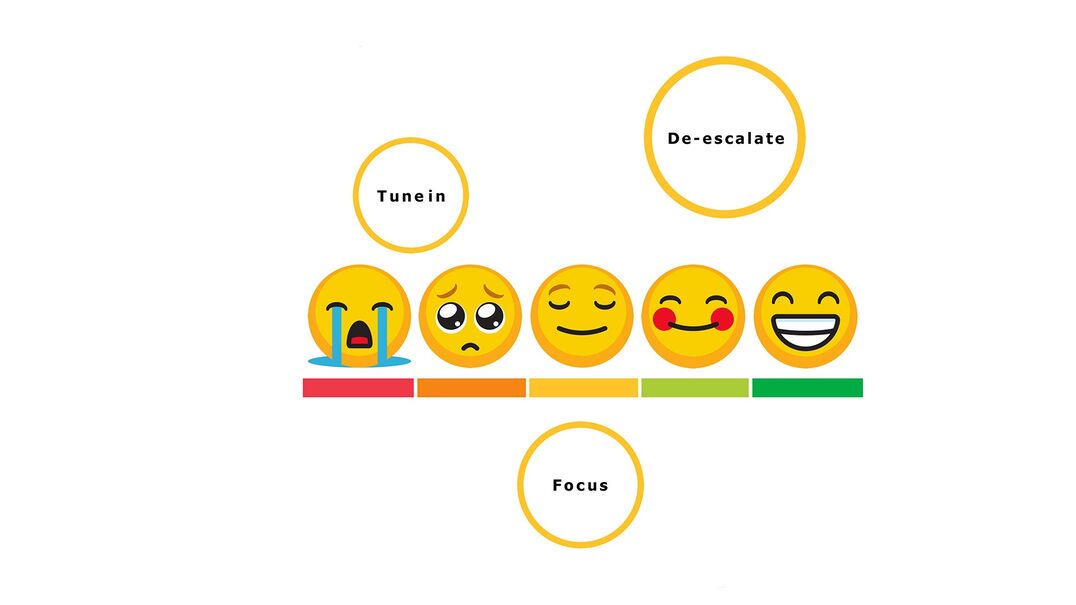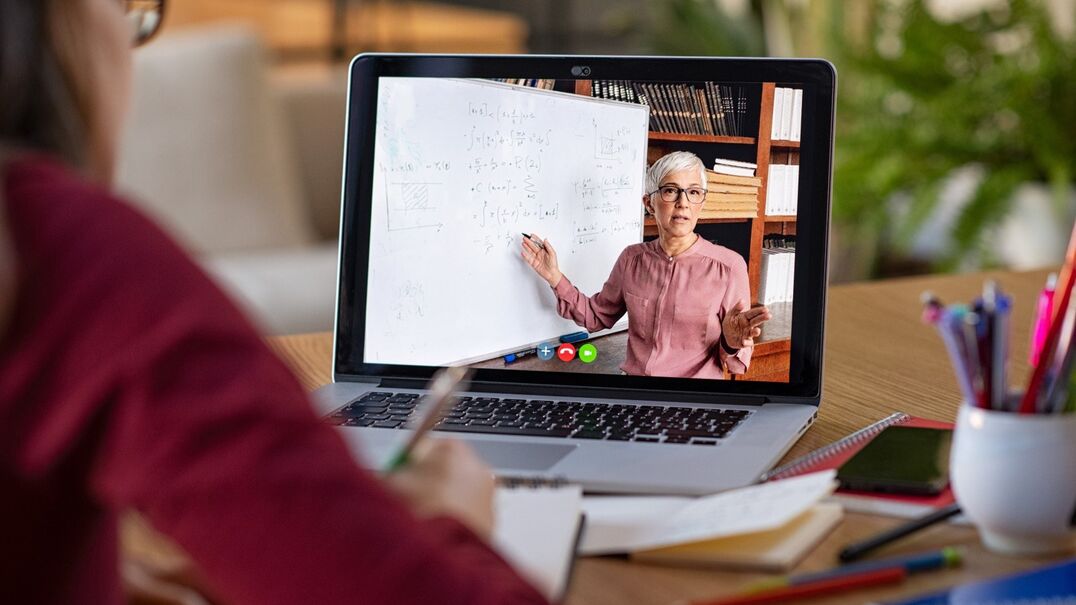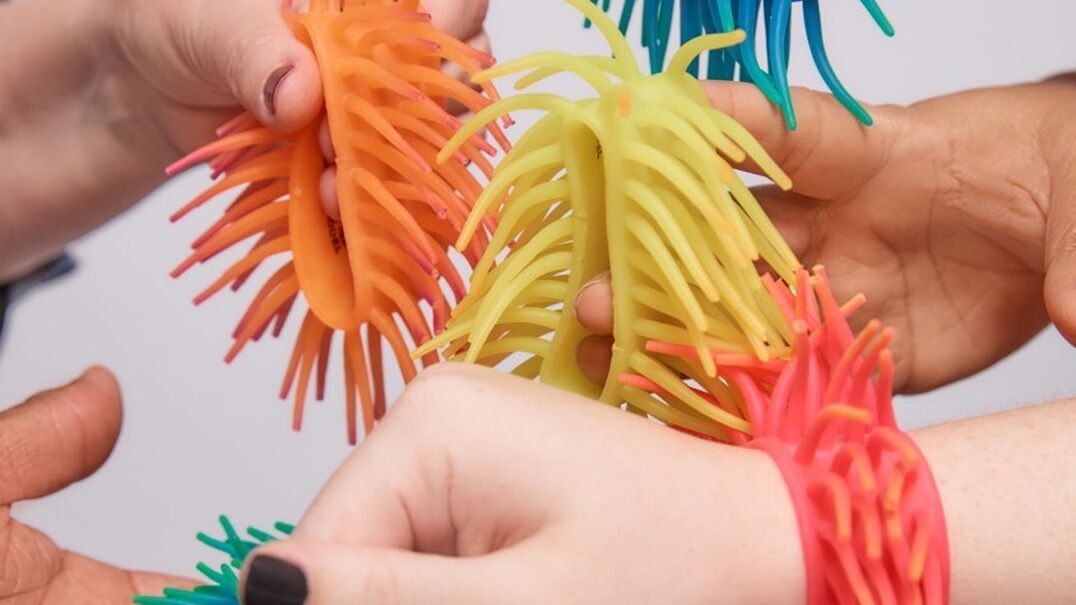We know that trauma can have significant impacts on young people. Affected regulatory, attachment and memory systems can be particularly significant in school settings. Young people are required to regulate their bodies and emotions in shared spaces, retain complex information, apply new skills, and form relationships with their peers, teachers and school communities.
Trauma-informed, culturally responsive pedagogies and practices intentionally use strategies that support healing, regulation and routine through every moment of interaction in a school. Circle routines are a powerful mechanism to practically build belonging and a sense of inclusion as foundational steps towards a modern and culturally responsive education system.
Welcome circle and the first 5 minutes

The first 5 minutes of class are critical for setting the tone for the rest of the learning. Consistent rhythms and routines, particularly ones that embed intentional positive micro-moments, are powerful healing interventions as they “help build confidence that positive events will occur and …flexibility when unexpected events are encountered” (Brunzell, 2016, p.76). Welcome circles – nurturing routines that support engagement in learning and wellbeing (Roffey, 2006) – are a key strategy for consistently embedding strengths and also tending to the body and relational connection.
This routine of forming a circle with our young people to review key values and expectations and celebrate any announcements and successes, serves as a threshold between the outside world and the complex task of learning. It allows young people to ground themselves, co-regulate and establish a common rhythm for the learning day. We know that schools are often pressed for time, and it can be tempting to jump straight into content. However, when we take the time to check in and connect with our young people, we are not only setting them up to get much more out of the learning, but we are providing an opportunity for us, as educators, to get on the front foot of any potential issues that may present as speedbumps for learning.
Why a circle?
The practice of sitting or standing in a circle is one that many cultures have used for centuries – and continue to use today – as a way to support decision making and resolve conflict (Roffey, 2006). By taking the time to be together, side by side, to establish a common understanding and share positive emotions, we are supporting young people to build relationships with their peers and share power in healthy, relational ways. The circle allows us to ensure that everyone is equally visible and connected and, symbolically, that each person’s worldview stands on equal footing (Brown & Di Lallio, 2020).
Setting up for success
Circle is most powerful when it is implemented consistently and predictably. This means establishing a set time when circle occurs, as well as a clear structure for how long it will go for and expectations for the routine. For example, are we sitting or standing? What if you aren’t comfortable participating in circle, are you allowed to pass? We want our young people to feel a sense of ownership over this routine, so it is important to explain to them why you are working towards this routine, and also to give them voice in co-creating explicit expectations. With time, students will be able to run circle themselves. As an everyday routine, we recommend that circle should run for less than seven minutes so that it does not take up too much learning time.
Below we will discuss elements that we at the Berry Street Education Model (BSEM) propose for successful welcome circles.
Greeting
Why greetings?
We start welcome circle with a couple of minutes for young people to greet each other and connect. This simple, intentional act can form an important part of supporting the formation of bonding relationships between students (Warren et al., 2009). Sheverin-Venet (2021, p. 118) agrees that a critical part of our role as educators is to act as connection makers: as well as taking time to individually greet students ourselves, that we also give them time to connect with each other.
We know that mornings can potentially be stressful times for all households, and that young people may only hear their names spoken in stressed ways as they rush out the door to school. As a part of greeting, we explicitly encourage young people to call out each other’s names with warmth and enthusiasm so that everyone can feel fully seen.
Before circle
- as names are critically important sites of identity, often with deep connections to familial histories, languages and cultures (Gunn et al., 2014), correct pronunciation matters. This can be challenging when working across varied linguistic backgrounds. We encourage young people to rehearse and practice saying each other’s names, and ensure they call each other out by name when greeting. Taking time to explicitly unpack the pronunciation and history of students’ names is a way of prioritising cultural perspectives in the classroom, as well as to explore phonemes and etymology
- greeting routines can be an entry for discussions around touch boundaries, which can differ significantly from one culture to another. An explicit conversation around bodily autonomy and consent can empower young people who do not embrace touch to seek alternative ways of greeting.
Variations in circle
- for some young people, greetings can be a way to embrace healthy physical touch – a vital human need – through handshakes or fist bumps
- for positive energy escalation, we sometimes set a timer for a minute and encourage young people to move around the room and see how many people they can greet in that time
- to support bonding relationships, we can hand out pairs of coloured cards at random as a way to encourage greeting someone new. Having a conversation prompt, such as ‘a funny thing that happened this week’ can further support connections, as well as build up positive emotions, which we know benefit cognition and learning (Li et al., 2020).
Values and expectations
Why values and expectations?
Values and expectations are an important mechanism for student voice and agency in the classroom, as well as building safety and predictability. Identifying shared values in an authentic way provides a pathway for common direction and purpose in learning – key to belonging in a school (Allen et al., 2018).
However, values are also incredibly complex and subjective as they are mediated through cultural frames and personal lived experience. As such, we highlight the importance of consistent, transparent, firm expectations (Brunzell & Nourish, 2021). Rather than assuming our young people know what behaviours we want from them, we want to be explicit and clearly articulate our expected behaviours, as well as what they can expect from us, and to be explicit in what they can do – is it okay for young people to use fidget tools? What are the protocols if they get overwhelmed, and need a moment to self-regulate?
Before circle
- model our own values and humility, and practice open-hearted listening to our young people and their values. We want to support them to understand their values and how they can contribute to the classroom community.
- facilitate activities and discussions that support ongoing values literacy:
- set up protocols around values discussions for emotional safety – what things are not up for debate? What level of confidentiality does this conversation need to have?
- use developmentally appropriate, age respectful prompts, such as ’this class values honesty’
- do a ‘4 corners’ activity where each corner is labelled as either ‘strongly agree’, ‘agree’, ‘disagree’, or ‘strongly disagree’, can additionally bring movement into the activity
- explore values in stories, including stories from community.
- explicitly set shared expectations through class discussions at the start of the year:
- y-charts are a simple way to scaffold this – what do you want your classroom to look like? Sound like? Feel like?
- ask young people whether there any words or behaviours that are not okay in the shared space.
Variations in circle
- ask young people to name three behaviours that might demonstrate a school value. For example – how do you want people to show respect to you in this lesson? What does it look like to be engaged in learning?
- Revise a shared value for the session, review its meaning and implied behavioural expectations. For example, “Today we’re going to focus on the school value of caring. What does that mean to you? How can we show caring on our excursion today?”
- stick to 1-3 values or expectations at a time to avoid information overload (Dix, 2017)
- ask young people to share three of their own values Announcements.
Why announcements?
We believe that every young person has the right to feel seen and celebrated. Sharing our positive news with others, and having it received with active enthusiasm, can boost happiness, wellbeing and vitality (Lambert et al., 2013). A quick round of announcements allows young people to celebrate positive news with each other, and to build a reservoir of positive emotions that they can draw on in the future.
Before circle
- ask young people to nominate a date in the school year that they would like to be celebrated. This could be a birthday, their first day at the school, or an international day that appeals to them (World Penguin Day is a favourite of ours!). This avoids pressure to celebrate birthdays, which may carry painful memories. It also means that those who want to celebrate birthdays that fall in the holidays do not get missed out.
Variations in circle
- for older students, a simple “is it anyone’s special day today?”, provides a chance to self-nominate.
- for talkative students, we recommend a list of ‘special dates’ (see below) that we can share on their behalf, rather than asking open ended questions. This helps us preserve learning time.
- sharing announcements from around the world can help us to broaden the range of perspectives shared. We suggest looking up international days and famous birthdays to share with young people, or getting them to share key dates in their areas of interest.
- we mentioned above the importance of being a connection maker. One school we work with that caters for older students has developed a calendar resource of fun, age-and stage-appropriate community events. Events that are on that week are then shared in announcements, as a way for young people to find connections in the community that they may not be aware of or exposed to.
What went well
Why a ‘WWW’?
Using a technique that has emerged from wellbeing sciences, we encourage students to reflect on what went well (WWW). In checking our young people out of circle, or even out of a learning period, asking the group to come up with three WWW’s is a simple and effective way to build positive reflection and savour their achievements. It may initially be challenging for young people to articulate what they have done well if they are not in the habit of doing so. Notably, some young people who have been impacted by trauma may come to us with a deep sense of shame, and powerfully negative narratives of the self: “some students…may have had few opportunities to explore their strengths or even understand that they have strengths inside themselves” (Brunzell & Nourrish, 2021, p.70). We use this strategy to gently build the capacity of our young people to see themselves and their peers in a positive light and thus support their self- and collective efficacy.
Before circle
A shared language of strengths can make this task feel more achievable and comfortable, and additionally expands our students’ vocabularies. One framework for this is the VIA Institute on Character’s 24-character strengths, divided into six groupings, that together help us understand 24 ways to action our values (Peterson & Seligman, 2004; www.viacharacter.org). This strengths-based approach is underpinned by decades of worldwide evidence, and thus, those who use VIA (like we do) benefit from the ongoing research, materials and future directions arising from this paradigm.
Some helpful approaches when developing a language of strengths:
- focus on one at a time: for example, “This week, we will focus on the strength of teamwork – what are three ways we’ve used teamwork in our learning today?”
- connect strengths to lives outside of school, including family, community and behaviours that demonstrate different strengths in culturally relevant ways.
Variations in circle
- ask young people to call out three things that have gone well for them as a quick way to practise positive reflection
- if callouts feel uncomfortable for young people, they can write down one thing they have done well that lesson, or a strength that they have used
- this can also be a moment of appreciation. Students can share (verbally or through writing) a strength they saw a peer using that lesson.
Concluding thoughts
Welcome circles, when embedded as a consistent and predictable routine, are an effective way to facilitate micromoments of attunement and connection between both adults and students, and amongst the students themselves. By supporting our young people to feel fully seen, heard and welcomed into a space, as well as facilitating the experience of positive emotions, we provide the foundation for healing – bodily regulation and relational safety – both critical for deep engagement in learning.
References
Allen, K., Kern, M. L., Vella-Brodrick, D., Hattie, J., & Waters, L. (2018). What schools need to know about fostering school belonging: A meta-analysis. Educational Psychology Review, 30, 1-34.
Brown, M. A., & Di Lallo, S. (2020). Talking circles: A culturally responsive evaluation practice. American Journal of Evaluation, 41(3), 367-383.
Gunn, A. A., Brice, A. E., & Peterson, B. J. (2014). Ideas for the classroom: Culturally responsive teaching: Exploring children's names and cultural identities: Sandra Stone and Basanti Chakraborty, Editors. Childhood Education, 90(2), 174-176.
Harris, R. (2010). A quick look at your values – page 1. A quick look at your values. Retrieved May 2, 2023, from https://www.actmindfully.com.a...
Lambert, N. M., Gwinn, A. M., Baumeister, R. F., Strachman, A., Washburn, I. J., Gable, S. L., & Fincham, F. D. (2013). A boost of positive affect: The perks of sharing positive experiences. Journal of Social and Personal Relationships, 30(1), 24-43.
Li, L., Gow, A. D. I., & Zhou, J. (2020). The role of positive emotions in education: A neuroscience perspective. Mind, Brain, and Education, 14(3), 220-234.
Rigney, I., Sisson, J., Hattam, R. & Morrison, A. (2020). Bringing culturally responsive pedagogies and Reggio Emilia education principles into dialogue: Children learning to live together in diverse communities. Adelaide: University of South Australia. http://dx.doi.org/10.13140/RG.2.2.18903.55203e
Warren, M., Hong, S., Rubin, C. & Sychitkokhong, P. (2009). Beyond the bake sale: A community-based relational approach to parent engagement in schools. Teachers College Record: The Voice of Scholarship in Education, 111(9), 2209-2254. https://doi.org/10.1177/016146810911100901



